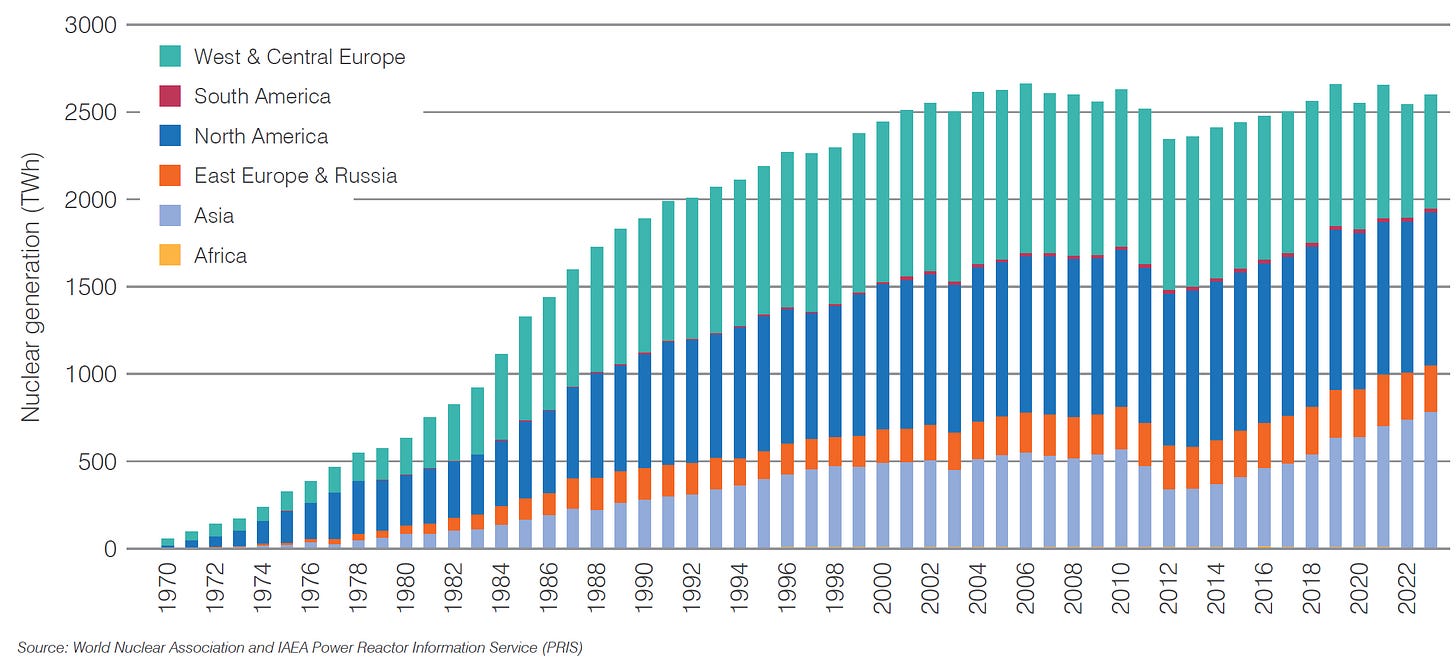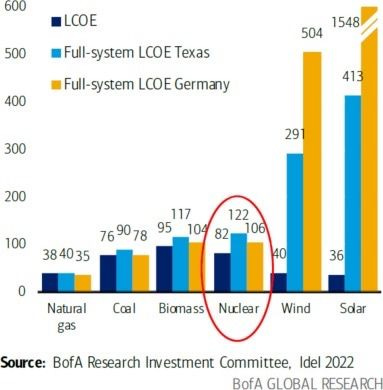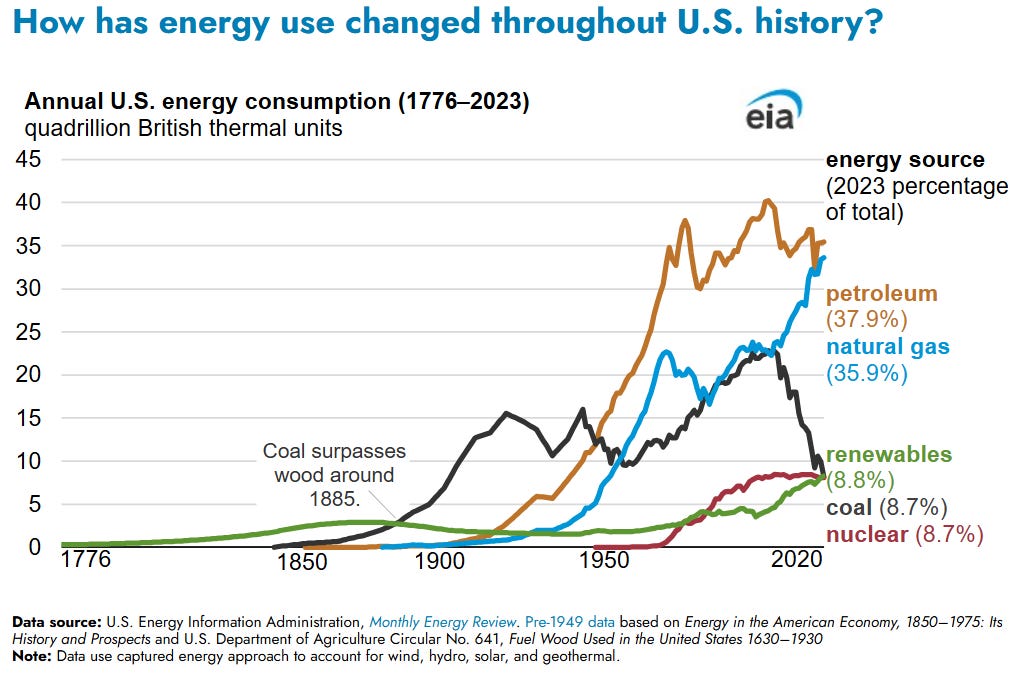Small Modular Reactor stocks are a SCAM.
NuScale and Oklo likely won't be able to deliver on their promises. And even if they do, their technology won't matter much. Certainly not for AI. It's a scheme to rip off gullible retail investors.
TLDR Summary
After decades of being shunned, nuclear is currently going through a renaissance with investors as it is seemingly the only technology that promises energy generation that is both firm and emission-free. This is especially valuable in the age of narrative-driven investing, as it offers a solution for investors committed to decarbonization while recognizing the limitations of wind and solar.
Small Modular Reactors are one example of those innovations. These combine state-of-the-art nuclear technology with industrial manufacturing to improve cost, flexibility and scalability.
NuScale and Oklo are the most popular pure plays capitalizing on the SMR hype. Together they are sporting more than $20bn in equity market capitalization without regular revenue and without any of their products operational yet. Based on long-term consensus estimates (to the extent we can take those seriously), their combined valuation is currently about 25x 2029 (!) revenues.
In return, investors get exposure to a technology that has yet to prove that it can be cost competitive to existing energy sources. In an industry that is notorious for monstrous cost overruns. Through companies that misrepresent their capabilities and engage in suspicious business dealings with affiliates.
Even if these companies deliver on their promises, it is unlikely that the result will make an economic difference. These are solutions in search of a problem. Most of AI will be happening in the US and there it will be powered by natural gas.
There is nothing wrong with exploring new technologies that are not yet competitive to existing technologies. It can in fact be highly lucrative. However, these moonshots should not be financed by retail shareholders paying astronomical prices. The technology would be most credible if is was developed out of retained earnings of established companies.
A brief history on commercial nuclear power
The potential of nuclear fission was first discovered in the 1930s and famously used to develop nuclear bombs for World War II. Commercial use started in the 1950s with nuclear power plants opened in the US, the Soviet Union and the UK.
It works by shooting neutrons at a so called fissile material (for example enriched uranium). Absorbing the neutron splits the nucleus which is called fission. This fission releases more neutrons which creates the famous chain reaction.
A coolant is used to control this process. Water is typically used in traditional nuclear powerplants. The cooling slows down the neutrons as the water nuclei collide with the neutrons which transfers energy between them. This increases the likelihood that the neutrons will be absorbed to trigger the fission. It makes the process less powerful, but more predictable.
Development of nuclear power picked up speed in the 1970s, in part due to the two oil crises in 1973 and 1979.
The technology then experienced several setbacks. In 1979, there was a partial meltdown in Pennsylvania known as the Three Mile Island accident. In 1986, the catastrophic reactor explosion in Chernobyl happened which ignited a strong anti-nuclear movement in Europe.
In addition to political challenges, nuclear power also had to deal with economic challenges as new power plants regularly had to deal with huge cost overruns. At times, they ended up 10-20x more expensive than originally budgeted. Every new powerplant was (and still is) a unique development with limited synergies from standardization that could be achieved in mass construction.
Political and economic reasons eventually caused a stagnation in the expansion of nuclear power with some countries actively working towards a phase-out of the technology. Fukushima accelerated that after 2011.
The US is not as hostile to nuclear power as other countries. It has however access to cheap and abundant alternatives, most importantly natural gas.
To illustrate that, check out the chart below which plots the levelized cost of electricity (LCOE) for various energy sources.
Think of the LCOE as the average price per MWh over the entire lifetime of a powerplant. This does not take the cost of storage into account, i.e. compensation for delivering the electricity at the right time and the right place. LCOE therefore severely understates the cost of intermittent energy sources.
Full-system LCOE includes storage costs. It calculates the hypothetical cost of supplying 100% of electricity through one energy source and thereby avoids cross-energy subsidies between firm and intermittent energy sources.
Natural gas is by far the cheapest form of electricity production in the US (and in Germany as well before the Russia drama) and its production is also the most flexible and hence it’s the best complement for wind and solar which have huge political backing. As a result, its consumption has grown sharply over the last 20 years in the US while nuclear has been flat.






